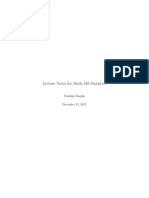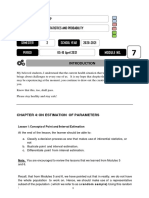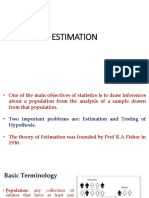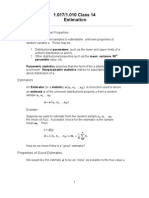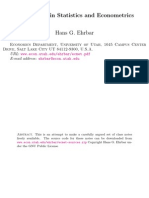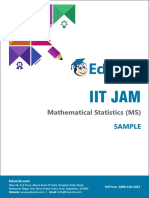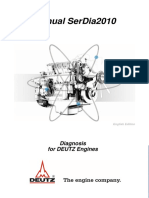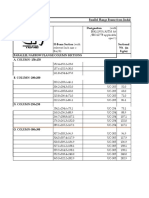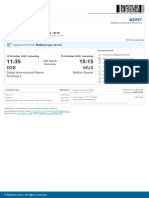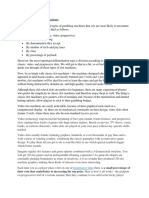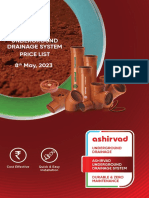0% found this document useful (0 votes)
30 views6 pagesStat Lecture 2
This document discusses data, models, parameters, and statistics. It provides examples of different datasets, including Old Faithful eruption data, ChickWeight data, and Longley's Economic Regression Data. It then discusses assumptions made when performing statistical inferences on data, such as samples being independent and identically distributed. Parameters of distributions are discussed as unknown values that need to be estimated. Basic statistical models like estimation, confidence intervals, hypothesis testing, and prediction are introduced. The document concludes by discussing measuring the performance of statistical results and the definition of an unbiased estimator.
Uploaded by
Yuvraj WaleCopyright
© © All Rights Reserved
We take content rights seriously. If you suspect this is your content, claim it here.
Available Formats
Download as DOC, PDF, TXT or read online on Scribd
0% found this document useful (0 votes)
30 views6 pagesStat Lecture 2
This document discusses data, models, parameters, and statistics. It provides examples of different datasets, including Old Faithful eruption data, ChickWeight data, and Longley's Economic Regression Data. It then discusses assumptions made when performing statistical inferences on data, such as samples being independent and identically distributed. Parameters of distributions are discussed as unknown values that need to be estimated. Basic statistical models like estimation, confidence intervals, hypothesis testing, and prediction are introduced. The document concludes by discussing measuring the performance of statistical results and the definition of an unbiased estimator.
Uploaded by
Yuvraj WaleCopyright
© © All Rights Reserved
We take content rights seriously. If you suspect this is your content, claim it here.
Available Formats
Download as DOC, PDF, TXT or read online on Scribd
/ 6
